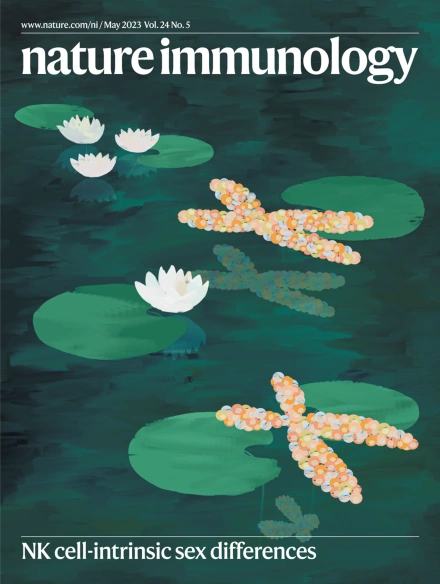A blog that publishes updates and open access scientific papers about allergy, asthma and immunology. Editor: Juan Carlos Ivancevich, MD. Specialist in Allergy & Immunology
May 19, 2023
CD4+ T cell memory. Open Access Review.
Food anaphylaxis in older people. Open Access
EAACI POSITION PAPER: Allergy to stings and bites from rare or locally important arthropods: worldwide distribution, available diagnostics, and treatment. Open Access.
Sturm GJ, Boni E, Antolín-Amérigo D, et al. Allergy. 2023 May 16. doi: 10.1111/all.15769. Epub ahead of print.
Abstract
Insect venom allergy is the most frequent cause of anaphylaxis in Europe and possibly worldwide. The majority of systemic allergic reactions after insect stings are caused by Hymenoptera and among these, vespid genera induce most of the systemic sting reactions (SSR). Honey bees are the second leading cause of SSR.
May 18, 2023
Evaluation of Plasmapheresis vs Immunoglobulin as First Treatment After Ineffective Systemic Corticosteroid Therapy for Patients With Stevens-Johnson Syndrome and Toxic Epidermal Necrolysis
Miyamoto Y, Ohbe H, Kumazawa R et al. JAMA Dermatol. 2023 May 1;159(5):481-487. doi: 10.1001/jamadermatol.2023.0035.
Key Points
Question Are the clinical outcomes of administering plasmapheresis therapy first better than those of administering intravenous immunoglobulin (IVIG) therapy first after ineffective systemic corticosteroid therapy in patients with Stevens-Johnson syndrome or toxic epidermal necrolysis (SJS/TEN)?
Findings This retrospective cohort study of 266 inpatients with SJS/TEN found no significant difference in mortality rates between the plasmapheresis-first and the IVIG-first groups. Patients who received plasmapheresis therapy first had longer hospitalization stays and incurred higher expenses.
May 17, 2023
Obstructive Sleep Apnea May Lead to Early Cognitive Decline in Men
Distinct cognitive changes in male patients with obstructive sleep apnoea without co-morbidities
 Valentina Gnoni1,
Valentina Gnoni1,  Michel Mesquita2,
Michel Mesquita2,  David O'Regan1,3,4,
David O'Regan1,3,4,  Alessio Delogu5,
Alessio Delogu5,  Ivan Chakalov6,7,
Ivan Chakalov6,7,  Andrea Antal7,
Andrea Antal7,  Allan H. Young8,9,
Allan H. Young8,9,  Romola S. Bucks10,11,
Romola S. Bucks10,11,  Melinda L. Jackson12 and
Melinda L. Jackson12 and  Ivana Rosenzweig1,3,4*
Ivana Rosenzweig1,3,4*- 1Sleep and Brain Plasticity Centre, Department of Neuroimaging, Institute of Psychiatry, Psychology and Neuroscience, King's College London, London, United Kingdom
- 2L&M Data Science Ltd., London, United Kingdom
- 3Sleep Disorder Centre, Nuffield House, Guy's Hospital, London, United Kingdom
- 4Faculty of Life Sciences and Medicine, King's College London, London, United Kingdom
- 5Institute of Psychiatry, Psychology and Neuroscience, King's College London, London, United Kingdom
- 6Department of Anesthesiology, University Medical Center Göttingen, Göttingen, Germany
- 7Department of Neurology, University Medical Center Göttingen, Göttingen, Germany
- 8Department of Psychological Medicine, Institute of Psychiatry, Psychology and Neuroscience, King's College London, London, United Kingdom
- 9South London and Maudsley National Health Service (NHS) Foundation Trust, Bethlem Royal Hospital, Beckenham, United Kingdom
- 10School of Psychological Science, University of Western Australia, Perth, WA, Australia
- 11The Raine Study, School of Population and Global Health, University of Western Australia, Perth, WA, Australia
- 12Turner Institute for Brain and Mental Health, School of Psychological Sciences, Monash University, Melbourne, VIC, Australia
Introduction: Obstructive sleep apnoea (OSA) is a multisystem, debilitating, chronic disorder of breathing during sleep, resulting in a relatively consistent pattern of cognitive deficits. More recently, it has been argued that those cognitive deficits, especially in middle-aged patients, may be driven by cardiovascular and metabolic comorbidities, rather than by distinct OSA-processes, such as are for example ensuing nocturnal intermittent hypoxaemia, oxidative stress, neuroinflammation, and sleep fragmentation.
May 15, 2023
Upregulated expression of Notch1/4 - JAG-1/DLL-1 detected in allergic rhinitis
Hjalmarsson, E., Petro, M., Georén, S.K. et al. Allergy Asthma Clin Immunol 19, 41 (2023). https://doi.org/10.1186/s13223-023-00793-4
Abstract
Background
Allergic rhinitis (AR) is a chronic disease with high prevalence. There are currently many treatments available. However, despite an often good therapeutic response, many patients still report impairment in quality of life (QoL) during the pollen season. A skewed T helper (Th)2 polarization is a well-acknowledged pathologic feature of AR. In animal models, local notch signaling in peripheral tissue seems crucial for Th2 cell differentiation and the development of AR. However, the involvement of Notch signaling in Th2 cell differentiation and the development of AR in humans remains unknown. Hence, the present study investigated the human expression of Notch receptors on CD4+ T-cells in nasal mucosa and blood. Correspondingly Notch ligand expression was assessed on nasal epithelial cells and neutrophils.
May 14, 2023
Evaluation of pediatric patients with suspected polyethylene glycol and polysorbate allergy before mRNA SARS-CoV2 vaccination
Abstract
mRNA vaccines, particularly, have been associated with an increased risk of allergic reactions and rarely anaphylaxis. Although rare, vaccine reactions can cause significant anxiety and fear in the population, leading to indecision and vaccine refusal. This study aimed to retrospectively evaluate the role of polyethylene glycol (PEG) sensitivity in vaccination decision-making in pediatric patients at high risk of allergy or with suspected allergic reactions to the first dose of the severe acute respiratory syndrome coronavirus 2 (SARS-CoV2) vaccine. Seventeen enrolled patients were found to have decreased readiness to receive the Coronavirus Disease 2019 (COVID-19) vaccine after developing hypersensitivity to multiple and/or injectable drugs.
The Evolving Landscape of Immunotherapy for the Treatment of Allergic Conditions
Pandya A, Adah E, Jones B, Chevalier R. Clin Transl Sci. 2023 May 11. doi: 10.1111/cts.13546.
Abstract
Allergic conditions such as asthma, chronic urticaria, atopic dermatitis, and eosinophilic esophagitis have long been treated with oral and topical steroids which resulted in negative off target effects. However, newer biologic medications are increasingly being developed and approved for treatment of these conditions. These medications have a variety of mechanisms of action to target pathophysiology specific to these diseases. As biologics become more targeted, fewer off-target effects are seen improving tolerability for patients as well as expanded options for treatment of these conditions.






